《欧洲文化入门》
| 作者 | 王佐良等主编;司徒双等编著 编者 |
|---|---|
| 出版 | 北京:外语教学与研究出版社 |
| 参考页数 | 471 |
| 出版时间 | 1992(求助前请核对) 目录预览 |
| ISBN号 | 7560005713 — 求助条款 |
| PDF编号 | 88313418(仅供预览,未存储实际文件) |
| 求助格式 | 扫描PDF(若分多册发行,每次仅能受理1册) |
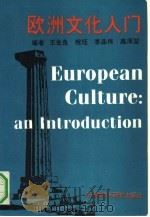
Introduction1
1.Uses of the Subject1
2.Two Major Elements in European Culture1
DIVISION ONE GREEK CULURE AND ROMAN CULTURE2
Ⅰ.Greek Culture2
1.The Historical Context2
2.Social and Political Structure3
3.Homer3
4.Lyric Poetry11
5.Drama12
a. Aeschylus13
b.Sophocles14
c.Euripides15
d.Comedy15
6.History16
a.Herodotus16
b.Thucydides17
7.Philoseophy and Science18
a.Socrates20
b.Plato22
c.Aristotle23
d.Contending Schools of Thought25
e.Science27
8.Art,Architecture,Sculpture and Pottery28
a.Art28
b.Architecture29
c.Sculpture29
Ⅰ.Discus Thrower30
Ⅱ.Venus de Milo30
Ⅲ.Laocoon group about 125 B.C30
d.Pottery30
9.Impact31
a.Spirit of Innovation31
b.Supreme Achievement32
c.Lasting Effect32
Ⅱ.Roman Calture33
1.Romansand Greeks33
2.Roman History34
3.Latin Literature35
a.Prose36
Ⅰ.Marcus Tullius Cicero36
Ⅱ.Julius Caesar38
b.Poetry38
Ⅰ.Lucretius38
Ⅱ.Virgil39
4.Architecture,Painting and Sculpture42
a.Architecture42
Ⅰ.The Pantheon42
Ⅱ.Pont du Gard42
Ⅲ.The Colosseum42
b.Painting43
c.Sculpture43
Ⅰ.Constantine the Great43
Ⅱ.Spoils from the Temple inJerusalem43
Ⅲ.She-wolf43
DIVISIONTWO THE BIBLE AND CHRISTIANITY45
Ⅰ.General Introduction45
Ⅱ.The Old Testament46
1.The Pentateuch46
a.The Fall of Man47
b.Noah's Ark49
c.Ten Commandments53
2.The Historical Books54
3.the poetical Books55
a.Book of Job55
b.Bookof Psalms56
c.Proverb57
d.Ecclesiastes59
e.Song of Solomon59
4.The Prophets61
a.Amos61
b.Jeremiah62
c.The Book of Daniel62
Ⅲ.Rise of Christianity63
1.The Life of Jesus66
2.The Spread of Christianity66
Ⅳ.The New Testament67
1.The Birth of Jesus68
2.Jesus Is Tempted by the Devil69
3.The Sermon on the mount70
4.The Last Supper71
5.The Crusifixion73
Ⅴ.Translationsof the Bible77
DIVISION THREE THE MIDDLE AGES81
Ⅰ.General Introduction81
Ⅱ.Maaor and Church81
1.Feudalism82
a.Growth of Feudalism82
b.The Manor83
c.Knighthood and Code of Chivalry84
2.TheChurch85
a.The Organization of church85
b.Church Fathers and Early Monasticism86
c.The Power and Influence of the Catholic Church88
3.The Crusades89
Ⅲ.Learning and Science91
1. Charlemagne and Carolingian Renaissance91
2.Alfred the Great and Wessex Centre of Learning92
3.St .Thomas Aquinas and Scholasticism92
4.Rogar Bacon and Experimental Science92
Ⅳ.Literature94
1.National Epics94
a.Beowulf95
b.Song of Roland99
2.Dante Alighieri and The Divine Comedy105
3.Geoffery Chaucer and The Canterbury Tales109
Ⅴ.Art and Architecture111
1.Romanesque111
2.Gothic112
DIVISION FOUR RENAISSANCE AND REFORMATION114
Ⅰ.General Introduction114
Ⅱ.Renaissance in Italy115
1.Historical Background115
2.The Rise of Humanism116
3.New Literature117
a.Giovanni Boccaccio117
b.Francesco Petrarch118
4.Renaissance Are120
a.Early Renaissance Artists121
Ⅰ.Giotto121
Ⅱ.Filippo Brunelleschi121
Ⅲ.Donatello122
Ⅳ.Giorgione122
b.High Renaissance Artists123
Ⅰ.Leonardo da Vinci123
Ⅱ.Michelangelo Buonarroti124
Ⅲ.Raphael126
Ⅳ.Titian126
5.Decline of the Italian Renaissance127
Ⅲ.Reformation and Counter-Reformation128
1.Pre-Luther Religious Reformers129
a.John Wycliffe129
b.Jan Hus129
2.Martin Luther and His Doctrines129
a.Beginning of the Reformation130
b.Translation of the Bible130
c.Gospel of Love and Idea of Equality131
3.John Calvin and Calvinism131
4.Reformation in England132
5.Counter-Reformation134
a.Council of Trent134
b.Ignatius and the Jesuits135
6.Protestantism and the Rise of Capitalism136
7.Conclusion137
Ⅳ.Renaissance inOther Countries138
1.Renaissance in France138
a.Historical Background139
b.Renaissance Writers in France139
Ⅰ.Francois Rabelais139
Ⅱ.Pleiade141
Ⅲ.Michel Eyques de Montaigne141
2.Ranaissance in Spanin145
a.Historical Background145
b.Literature Miguel de Cervantes145
c.Art El Greco148
3.Renaissance in the North148
a.Rebaussabce in the Netherlands Erasmus148
b.Renaissance in Flanders pieter Bruegel(the Elder)149
c.Renaissance in Germany151
Ⅰ.Albrecht Durer151
Ⅱ.Hans Holbein (the Younger)151
4.Renaissance in England152
a.Historical Background152
b.Thomas More152
c.William Shakespeare157
Ⅴ.Science and Technology during the Renaissance160
1.Geographical Discoveries160
a.Christopher Columbus160
b.Bartholomeu Dias161
c.Vasco da Gama161
d.Amerigo Vespucci161
2.Astronomy161
Nicolaus Copernicus161
3.Anatomy161
a.Leonardo da Vinci161
b.Andreas Vesalius162
4.Printing162
Aldus Manutius162
5.Political Science and Historiography162
a.Dante162
b.Niccolo Machiavelli163
c.Giorgio Vosari163
Ⅳ.Summing-up164
DIVISION FIVE THE SEVENTEENTH CENTURY166
Ⅰ.General Introduction166
Ⅱ.Science167
1.From Copernicus to Kepler167
2.Galileo Galilei170
3.Sir Isaac Newton173
4.Gottfried Wilhelm von Leibniz174
5.Invention of New Instruments175
6.Two merits Shared by the Great Scientists ofthe 17th Century176
Ⅲ.Philosophy,Politics and Literature in engl,and176
1.Francis Bacon176
2.Thomas hobbes180
a.Hobbes's MaterialistViews180
b.The Natural State of War181
c.The Laws of Nature182
d.The Theory of the Social Contract182
3.John Locke183
a.Locke's Materialist Views184
b.Locke'sPolitical Philosophy185
c.TheSocialcontract186
4.John Milton and the English Revolution187
Ⅳ.Descartes;French Classicism192
1.Rene Descartes193
a.The Method of Cartesinan Doubt193
b.Descartes's Theory of Knowledge194
c. Innate Ideas195
d.Descartes's Dualism195
2.French Classicism197
a.Pierre Corneille198
b.Jean Racine200
c.Moliere202
Ⅴ.Art202
1.Baroque Art204
a.GiovanniLorenzo Bernini204
b.Michelangelo Caravaggio204
c.Francesco Borromini205
d.Peter Paul Rubens205
e.Diego Velazquez206
2.Dutch Protestant Art206
VanRijn Rembrandt206
3.Art and Architecture in France207
4.Music208
DIVISION SIX THE AGE OF ENLIGHTENMENT210
Ⅰ.General Introduction210
1.Enlightenment210
2.Historical Context212
Ⅱ.FrenchPhilososphy and Literature214
1.Baron de la Brede et deMontesquieu214
a.Persian Letters214
b.The Spirit of the Laws214
2.Voltaire217
a.lettres Anglaise218
b.Candide218
3.Jean-JacquesRousseau219
a.The Origin of Human Inequality219
b.The New Heloise219
c.Emile ,or On Education219
d.The Social Contract219
e.The Confessions220
4.Denis Diderot220
a.philosophical Thoughts220
b.Letters onthe Blind221
c.Encyclopedie221
d.Elements of physiology221
e.Rameau's Nephew221
Ⅲ.English Literature224
1.Alexander Pope224
a.Essay on Criticism225
b.The Ra[e pf the lock225
c.Dunciad225
d.Essay on man225
2.DanielDefoe226
3.Jonathan Swift227
a.A ModestProposal227
b.Gulliver's Travels227
4.Samuel Richardson228
5.Henry Fielding228
6.Samuel Johnson228
7.Journalism and the Periodical Essay229
Ⅳ.German Literature and Philosophy230
1.Gotthold Ephraim Lessing230
a.Minna Von Barnhelm231
b.Nathan the Wise231
c.Laocoon231
d.HamburgischeDramaturgie231
2.Wolfgang vonGoethe232
a.The Sorrows of Young Werther232
b.Wilhelm Meister's Apprenticeship232
c.Wilhelm Meister's Apprenticeship232
d.Faust233
e.Poetry and Truth233
3.Johann Christoph Friedrich von Schiller238
a.The Robber238
b.Cabal and Love238
c.Wallenstein238
d.Wilhelm Tell238
4.Immanuel Kant240
a.General History of Nature and theoryof the Heavens241
b.Critique of pure Reason241
c.Critique ofPractical Reason241
d.Critique of Judgment242
Ⅴ.Art242
1.Rococo Art242
2.Typical Works and Major Artists244
a.Salon de la Princesse,Hotel de Soubise244
b.Rococo Painters244
Ⅰ.Antoine Watteau244
Ⅱ.Francois Boucher244
Ⅵ.Music244
1.The Musical Enlightenment244
a.Johann Sebastian Bach245
b.George FriderickHandel246
2.The Chassiscal Period247
a.Joseph Haydn249
b.Wolfgang Amadeus Mozart250
DIVISION SEVEN ROMANTICISM250
Ⅰ.General Introduction256
1.What is Romanticism?256
2.Two Revolutions258
Ⅱ.Romanticismin Germany259
1.Goethe and Schiller259
2.Schlegel Brothers (the Jena School)260
3.Heinrich Heine260
Ⅲ.Romanticism in England262
1.William Blake262
2. The Lakers ——Wordsworthand Coleridge263
3.George Gordon Byron265
4.Percy Bysshe Shelley267
5.John Keats268
6. Walter Scott269
Ⅳ.Romanticismin France270
1.Chateaubriand270
2.Victor Hugo272
3.George Sand274
V.Romanticism in Italy276
1.Alessandro Manzoni276
2.Giacomo Leopardi277
Ⅵ.Romanticism in Russia280
1.AleksanderPushkin280
2.Mikhail Y Lermontov282
Ⅶ.Romanticism in Poland283
Adam Mickiewicz284
Ⅷ.Concluding Remarks——A True Movement287
Ⅸ.Artamd Architecture288
1.Paintings288
a.Goya289
b.David290
c.Delacroix291
d.Gericault292
e.Turner293
f.JohnConstable293
2.Architecture293
Ⅹ.Music294
1.TheEarly Romantics295
a.Ludwig van Beethoven295
b.Franz Schubert297
c.Frederic Chopin299
d.Robert Schumann300
e.Felix Mendelssohn301
2.The Later Romantics—Middleof 19th Century301
a.Johannes Brahms302
b.Peter llitch Tchaikovsky304
DIVISION EIGHT MARXISMAND DARWINISM307
1.General Introduction307
2.Historical Background307
3.The Three Sources and Three Component Parts of Marxism308
a.GermanClassical Philisophy and Marsistphilosophy308
Ⅰ.Hegelian dialectics308
Ⅱ.Feuerbach's materialism309
Ⅲ.Marxist philosophy309
Ⅳ.Marxist historical materialism315
b.English Classical Political Economy and Marxist Political Economy317
c.Utopian Socialism and Scientific Spcoalism319
Ⅰ.Robert Owen319
Ⅱ.Henri de Saint-Simon319
Ⅲ.Charles Fourier319
4.Marx and Literature325
5.Summing-up328
Ⅱ.Darwinism329
1.General Introduction329
2.Ideas of Evolution Before Darwin330
a.Jean-baptiste de MonetLanarck330
b.Sir Charles Lyell330
c.Kark Marx331
3.Life of Charles Darwin331
4.Darwin'sWorks and Theories333
a.On the Origin of Species by Means of NaturalSelection,or the Preservation of Favoured Races in the Struggle for Life333
b.The Descent of Man335
5.Effects of Darwinism336
a.On Biology336
b.On Theology336
c.On Social Science336
DIVISION NINE REALISM338
Ⅰ.GeneralIntroduction338
1.What Is Realism?338
2.The Historical Background340
Ⅱ.Realismin France341
1.Stendhal341
2.Honore de Balzac343
3.Gustave Flaubert347
4.Emile Zola350
5.Guy de Maupassant352
Ⅲ.Realism in Russia352
1.Nikolai Gogol354
2.Lvan SergeyevichTurgenev355
4.Count Leo Tolstoy358
5.Anton Pavlovich Chekhov364
Ⅳ.Realism in Northern Europe367
1.Hebruk Ibsen367
2.August Strindberg374
Ⅴ.Realism in England375
1.Charles Dickens375
2.George Eliot378
3.William Makepeace Thackeray379
4.Thomas Hardy382
5.George Bernard Shaw382
Ⅵ.Realism in the United states383
1.Harriet Beecher Stowe384
2.Walt whitman385
3.Mark Twain389
4.Henry James390
Ⅶ.Art391
1.Realism in Art391
a.GustaveCourbet391
b.Jeab-Francois Millet392
2.Impressionismin Art392
a.Edouard Manet393
b.Claude Monet394
c.Camille Pissarro394
d.Pierre Auguste Renoir395
e.Hilaire Germain Edgar Degas395
3.Post-Impressionism397
a.Paul Cezanne397
b.Vincent van Gogh397
c.Paul Gauguin397
4.Sculpture398
5.Architecture398
Ⅷ.Music at the Turn of the Century399
1.AntoninDvorak400
2.Ckaude Debussy400
DIVISION TEN MODERNISMAND OTHER TRENDS402
Ⅰ.GeneralIntroduction402
1.Modernism Defined402
2.Historical Context403
3.Prigress in Science404
4.New Ideas and Thoughts405
a.The Unconscious405
b.Id, Ego ,Superego406
c.OedipusComplex406
Ⅱ.Contemporary Western Literature Before1945407
1.English Literature407
a.T.s.Eliot407
b.Joseph Conrad410
c.Virginia Woolf411
d.David Herbert Lawrence415
2.Irish Literature416
a.William Butler Yeats416
b.Jsmest Faulkner418
3.American Literature421
a.Ezra Pound421
b.William Faulkner423
c.Ernest Hemingway424
4.German Literature427
Thomas Mann427
5.Frebcg Literature428
a.Andre Gide428
b.Marcel Proust429
c.Albert Camus429
6.Russian and Soviet Literature430
a.Maksim Gorky430
b.Mikhail Aleksandrovich Sholokhov431
Ⅲ.Literature and Philosophy Since 1945432
1.Angry Young Men in England432
a.Kingsley amis432
b.Jack Kerouac433
2.BeatGeneration in America435
a.Allen Ginsberg435
b.Jack Kerouac437
3.Nouveau Roman437
a.Alain Robbe-Grillet438
b.Nathalie Sarraute438
4.Existentialism439
Jean-Paul Sartre439
5.The Theatre of the AbSurd439
a.SamuelBeckett440
b.Eugene Ionesco443
6.Black Humour443
JosephHeller443
Ⅳ.Art and Music446
1.Art446
a.Fauvism448
Ⅰ.Henri Matisse448
Ⅱ.AndreDerain448
b.Expressionism448
Ⅰ.EmilNolde449
Ⅱ.George Grosz449
Ⅲ.Max Beckmann449
Ⅳ.Paul Klee450
Ⅴ.Wassily Kandinsky450
c.Cubism450
Ⅰ.Pablo Picasso450
Ⅱ.GeorgesBraque452
d.Futurism452
UmbertoBoccioni453
e.Dadaism453
Ⅰ.Marcel Duchamp453
Ⅱ.Max Ernest454
f.Surrealism454
Ⅰ.Salvador Dali454
Ⅱ.Joan Miro455
g.Abstract Expressionism455
Jackson Pollock455
2.Scykotyre456
a.Henry Moore456
b.ConstantineBrancusi456
3.Music457
a.Arnold Schoenberg458
b.Igor Stravinsky460
c.Bela Bartok460
d.Dmitry Shostakovich461
1992《欧洲文化入门》由于是年代较久的资料都绝版了,几乎不可能购买到实物。如果大家为了学习确实需要,可向博主求助其电子版PDF文件(由王佐良等主编;司徒双等编著 1992 北京:外语教学与研究出版社 出版的版本) 。对合法合规的求助,我会当即受理并将下载地址发送给你。
高度相关资料
-

- 欧洲文学入门
- 1924 商务印书馆
-

- 欧洲文化变迁小史
- 民国19.12 中华书局
-
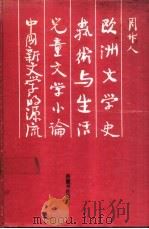
- 欧洲文学史
- 1989 长沙:岳麓书社
-

- 化学入门
- 1953 中国科学图书仪器公司
-

- 化学入门
- 1981 北京:科学普及出版社
-
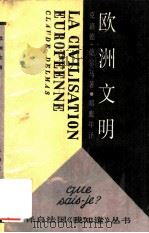
- 欧洲文明
- 1988 上海:上海人民出版社
-

- 欧洲文化入门
- 1992 北京:外语教学与研究出版社
-
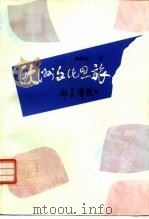
- 欧洲文化思旅
- 1997 北京:北京语言学院出版社
-
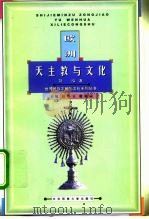
- 欧洲天主教与文化
- 1999 北京:中央民族大学出版社
-
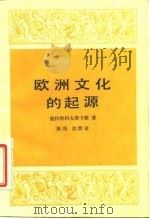
- 欧洲文化的起源
- 1984 北京:生活·读书·新知三联书店
-
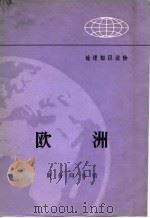
- 欧洲
- 1972 北京:商务印书馆
-

- 欧洲语言文化研究
- 2020 北京:社会科学文献出版社
-
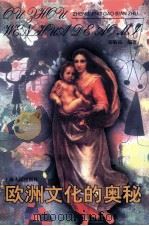
- 欧洲文化的奥秘
- 1999 上海:上海人民出版社
-

- 欧洲远古文化史
- 1932 上海:中华书局
提示:百度云已更名为百度网盘(百度盘),天翼云盘、微盘下载地址……暂未提供。➥ PDF文字可复制化或转WORD
